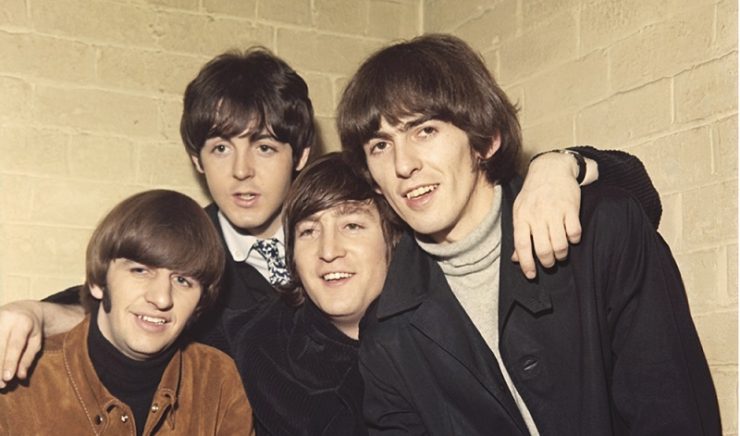THE BEATLES released their 11th studio album under the title Abbey Road on 26 September 1969 in the UK and 1 October 1969 in the US by the Apple label. The recording sessions for this album were the last in which all four members of the Beatles participated.
Although Let It Be was the final album completed by The Beatles prior to the band’s disbandment in April 1970, most of the album content was recorded before the Abbey Road sessions began. The single from the album, Something/Come Together, was released on October 6, 1969, topped the Billboard charts in the US. Abbey Road was recorded on 22 February-20 August 1969 at 2 studios namely EMI, Olympic and Trident Studios, London.
Although Abbey Road was a commercial success and reached No. 1 in the UK and US, the album received mixed reviews, with critics describing the music as inauthentic and the use of artificial effects. Today many critics see the album as the best and rank it as one of the greatest albums of all time.
Most notably, George Harrison’s contributions, “Something” and “Here Comes the Sun”, are considered some of the best songs he wrote for the group. The album cover features the four band members walking across a zebra crossing outside Abbey Road Studios and has become one of the most famous and followed images in recorded music history.
Abbey Road sold 4 million copies in the first 2 months of its release. In the UK, the album debuted at No. 1, which lasted 11 weeks before being replaced for a week by Rolling Stones’ Let It Bleed. The following week, Abbey Road returned to the top for another 6 weeks (completing the 17-week total) before being replaced by Led Zeppelin II. Overall, the album spent 81 weeks on the UK album chart. As of 2009, Abbey Road remains the Beatles’ best-selling album.
There is a mystery behind the making of the Abbey Road cover. The cover of The Beatles album, Abbey Road, which “may” have something to do with the death of one of the Beatles, Paul McCartney.
In 1969, the Beatles made an album that was actually recorded from 1966. This album was called Abbey Road. and is called one of the Beatles’ greatest albums. Suddenly there was news that one of the Beatles’ personnel named Paul McCartney had died.
This conspiracy theory began when a radio caller named “Tom” called a radio station and announced that Paul McCartney was dead, and asked to play the song “Revolution No. 9” in reverse. Then the radio station claimed to hear the phrase “Turn me on, dead man”.
For “Abbey” itself after searching for its meaning in the syriac language it means “father” and in its general sense is “ruler of spiritual affairs” and in the Old English sense it means a convent or a religious association “monastery”.
According to rumors circulating among Beatles fans, the clothes they wear are a clue. Starting from John Lennon’s all-white outfit indicating God, the next is Ringo Starr who wears a neat black suit and shiny shoes which means he is a priest. Third, Paul McCartney wears a suit but no shoes, the suit is not neat.
In British culture, dead people are buried in neat suits and not wearing shoes. While the last one is George, with the most casual attire with only jeans and an informal shirt, interpreting as a grave digger.
In addition, if you notice there is a car in the middle of the road behind you, the direction is straight with Paul McCartney’s position which is often referred to as the way Paul died. On the left side of the white car there is a number plate 28 (at that time Paul was 28 years old). On the right, there is a black car. That in British culture is a hearse.
And this rumor spread all over the world and people believed this strange rumor. So many are wondering, whether it’s true or not is still a mystery. Because until now the official information is that this album cover was only made suddenly and carried out in front of Apple recording suddenly and also. Apple recording is the record company owned by the Beatles.
Track List: (1). Come Together, (2). Something, (3). Maxwell’s Silver Hammer, (4). Oh! Darling, (5). Octopus’s Garden, (6). I Want You She’s So Heavy, (7). Here Comes the Sun, (8). Because, (9). You Never Give Me Your Money, (10). Sun King, (11). Mr. Mustard, (12). Polythene Pam, (13). She Came in Through the Bathroom Window, (14). Golden Slumbers, (15). Carry That Weight, (16). The End, (17). Her Majesty.
The Beatles: • John Lennon – lead, harmony and background vocals; lead and rhythm guitars; acoustic and electric pianos, Hammond organ and Moog synthesizer; white noise generator and sound effects; percussion, • Paul McCartney – lead, harmony and background vocals; lead, rhythm and bass guitars; acoustic and electric pianos, Hammond organ and Moog synthesizer; sound effects; wind chimes, handclaps and percussion, • George Harrison – harmony and background vocals; lead, rhythm and bass guitars; Hammond organ, harmonium and Moog synthesizer; handclaps and percussion; lead vocals (on “Something” and “Here Comes the Sun”), • Ringo Starr – drums and percussion; background vocals; lead vocals (on “Octopus’s Garden”).
Additional musicians: • George Martin – piano, harpsichord, organ and harmonium; percussion, • Billy Preston – Hammond organ (on “Something” and “I Want You (She’s So Heavy)”, • Mal Evans – “anvil” (on “Maxwell’s Silver Hammer”). [sources/photo special]
















